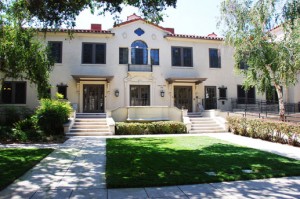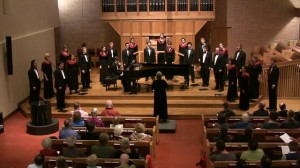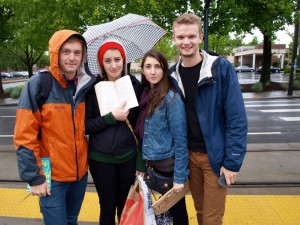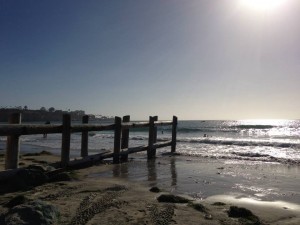Recently, I have been musing on the admittedly hackneyed concept of “home,” both alone and with my Pomona peers. Growing up in a close nuclear family with strong Northern California roots, I was, until recently, able to reduce “home,” in all of its abstract incarnations, to a place, a town, a block of 1920s track houses with too-narrow driveways and small patches of lawn.
I am technically “home” for the summer. However, as many of my fellow rising juniors and I have come to realize, our conceptions of home began to mutate when we entered Pomona in the fall of 2011. Indeed, each time I return “home” to my NorCal house, something feels slightly uncomfortable, artificial even. My little sister sleeps in the room I grew up in, the soft yellow walls are now hot coral pink underneath her paintings. My thirteen-year-old brother is almost as tall as I am. The play structure that once crowed the little back yard has inexplicably disappeared, replaced by an unsightly patch of dehydrated ferns. Time has passed in this home and I haven’t been around to pass along with it. But, as I have come to realize, it’s not just these physical, temporal changes. I am different. My center has shifted as a result of the time I have spent in Claremont.
Of course the SCC living room fireplaces, the sunny arches of the academic quad, the universal free wifi, and Harwood dorm’s undeniably undorm-like crown moulding make it almost too easy to accept Pomona’s campus as home. I have heard friends speak of Pomona as a “second home,” or even a “first home,” edging out the place(s) they spent their first seventeen or eighteen years. I vibrate with this multi-home model on some level as well, especially as I drive down Bonita into Claremont village after an excruciatingly long Winter break, squinting to make out the ever-attractive cinder block outline of Wig dorm in the distance. In many ways, Pomona, the campus, the place feels like a home, but my two-year-old roots here are not deep. Not yet. This is a temporary home and I have no tangible ownership over the halls and gardens and stone pathways. I can’t shake the feeling that I am growing increasingly homeless.

I was able to suspend the impeding confusion of the return “home” to Norcal this year by spending the first week of the summer on tour with the Pomona College Glee Club in Portland and Seattle. Being somewhere completely unfamiliar where I had no roots, no ties, I thought, would allow me to bask in my newfound homelessness, freed from the moorings of place.

However, as I traversed the Pacific Northwest, surrounded by a wacky assemblage of familiar “Gleeps,” performing classical choral music, an activity I have felt “at home” doing since age six, I quickly realized I felt anything but homeless. Taking the people, activities, and experiences I knew and loved at Pomona, uprooting them, and transplanting them to unfamiliar places where it rained incessantly in June did not, in fact, diminish the sense of comfort and belonging that I have developed at Pomona over the past two years.

Yes, as many writers far more eloquent than I have pointed out, home is people. I am undeniably “at home” with the members of Glee Club and my other Pomona friends. However, something about this sense of “home” extends beyond a sense of belonging within a group of raincoat bundled liberal arts students.
These musings came to a head during a Glee Club trip to the hallowed Powell’s Books in Portland, OR, a multi-level warehouse-like store divided into what felt like millions of meticulously color-coded special-interest sections. We walked in slowly, hesitantly, squeezing out our pathetically rain-soaked Southern California clothing and taking in the scent of shelves on shelves of books, new and old. Then, suddenly, the madness commenced with each of us running rabidly to our respective sections: French colonial history, Astrology, Turkish feminist literature, green urban planning. Unleashing a Pomona student in Powell’s Books is like unleashing a sugar-starved five-year-old in a candy warehouse. Beautiful, beautiful carnage.
Soon, we were tugging on each other’s wrists, pointing new sections out to our friends, flipping through graphic novels, histories, biographies, math textbooks, Ecuadorian poetry, ignited and consumed by our own interests, but dying to share in each other’s discoveries. This was home. This exchange of ideas. This mental state of complete and utter engagement. This sense of belonging in a community of friends and students equally excited about spending our only free afternoon in Portland at a bookstore.

After Powell’s, I postponed my NorCal homecoming (and my blogging debut) by another few weeks with trips to Vancouver, Central Washington, and SoCal. I visited the “homes” of Pomona friends in Ellensburg, Washington, Los Angeles, and San Diego. I walked the halls of their high schools, shook hands with their parents, slept on their couches, and ate what they ordered for me at their favorite hole-in-the-wall high-school haunts. I let myself wander up and down the West Coast, feeling “at home” with the friends I visited, while looking in on the places they call “home” from the outside. I remarked in each of them the same discomfort-tinged belonging born of repeated absence and return that I experience each time I come back to the Bay Area.

Now, I find myself back in NorCal, working over email and Skype with French professor Margaret Waller through Pomona’s Summer Undergraduate Research Program (SURP). She is writing a book (working title: Napoleon’s Closet), dealing with the counterintuitive and intersecting roles of the French clergy, the fashion press, and the Napoleonic Empire in the construction of “modern” masculinity. (Explaining this project warrants a blog post in itself, but for the moment, just know that it is completely mind-bending and AWESOME!)

As I sit at my desk, looking out over the playstructure-less yard, shifting through piles of obscure 18th-century French-language source material on clerical dress, and trying to make sense of critical masculinity theory, I realize that I have, in a way, brought a piece of my Pomona home to my Norcal home. Or maybe, if we abandon this two-home dichotomy and return to my grossly underdeveloped home-as-mental-state theory, all of these places, people, experiences, and ideas have converged here, at this little desk, just as they did at Powell’s books. Challenged, engaged, swimming in words and sparks of ideas, I am finally home.
